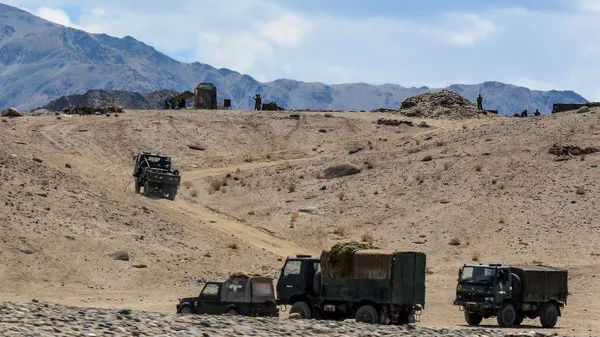The year 2020 saw India and China in an eyeball-to-eyeball confrontation on the banks of the serene Pangong Lake, a glacial lake at an altitude of 14,000 feet, in eastern Ladakh. The confrontation began in April, when China dispatched a large number of troops to the LAC that prompted India to send reinforcements in the ‘operational alert areas’. The LAC is the 3,488 km long border between India and China.
While Ladakh forms the western sector of the LAC, Arunachal Pradesh and Sikkim constitute the eastern sector, while Himachal Pradesh and Uttarkhand make up the middle sector, which is the quietest. On May 5, troops of both countries exchanged blows that left a few injured but not a single bullet was fired.
The tension escalated on June 15 after violent clashes in Galwan Valley. Twenty Indian Army personnel were killed in the clashes. The Chinese side also suffered casualties but it did not give out any details.
Also read: China’s military might and limits of its application
Reports indicate that this round of confrontation, the eighth since 1962, was triggered by China’s opposition to India building a road around the Pangong lake area and another road in Galwan Valley that would allow Indian troops quicker movement to the Galwan Valley, Karakoram Pass and the Depsang plains.
China opposes India increasing its road network in the region that would help in patrolling of the area near the border. India, on the other hand, maintains that the area of infrastructure upgrade is well within its territory.

The last time the two Asian giants were locked in a confrontation was in 2017, when for 73 days they were in an eyeball-to-eyeball situation in Doklam, an area at the junction of India, Bhutan and China.
Also read: Dealing with China and Pakistan’s threat to India’s national security
Two weeks after the Galwan valley clash, the Indian government banned 59 Chinese mobile applications. The list included immensely popular apps like TikTok, Shein, Shareit and UC Browser. The government said that the move had been taken as the aps were “prejudicial to sovereignty and integrity of India, defence of India, security of state and public order.”
Also read: China Checkmated – Options and way forward
Since then, India and China have held several rounds of diplomatic and military-level talks, but there has no no easing of tensions along the border yet.







